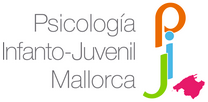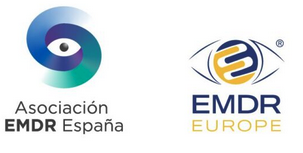
What is attachment?
Attachment, in its academic meaning, is the affective bond that appears between the caregiver (usually a parent) and the child, established in the first moments of life. The purpose of attachment is to ensure the care of the child, its proper psychological development, to consolidate its personality, to manage its emotions. . . Therefore, the figure of the caregiver becomes crucial in the first stages of life. Depending on the type of bond, some form of emotional attachment will be generated, something that has many consequences (positive or negative) in adulthood. It should be noted that today, the term “attachment” is popularly used to refer to other phenomena in a more general way; for example, stoicism reflects on the idea of not feeling attachment, referring to not becoming too attached to people, situations or things. But, as we have just seen, the original meaning is different and very concrete.
Attachment theory was proposed by John Bowlby in the 20th century, a psychiatrist who studied how maternal bonds impacted children’s behavior in different settings (e.g , juvenile delinquents). Bowlby was responsible for proposing an initial distinction of the various types of attachment (explained below), a classification which was extended by Mary Ainsworth.
Attachment is so important because, among other things, it is responsible for making the child feel safe in situations of potential danger. A secure attachment, as will be seen later, will allow the child to explore the world peacefully, as the child has the guarantee that the caregiver will be there if something goes wrong. An insecure attachment can lead to problems such as anxiety or lack of self-esteem in adulthood.
Attachment is usually consolidated in four different stages:
- Before 6 weeks, the newborn baby does not show particular attachment to any figure that cares for him.
- Between 6 weeks and 7 months of age, the baby shows more affection towards all its caregivers, without any clear preference between them.
- From 7 months of age, this preference is consolidated, and the baby begins to feel more comfortable with certain figures.
- From 10 months on, these bonds with caregivers become more solid and clear.
Types of attachment in adults:
When talking about the existence of different types of attachment in adults, reference is made to the fact that, depending on our relationship with the figures of caregivers when we were young, we will relate in one way or another to our different bonds as adults, which is one of the aims of general health psychology and is usually reflected in couples’ therapies. Thus, different types of attachment have been spoken of:
Secure attachment:
A secure attachment is generated when the figure of the caregiver has never been absent in childhood. If the child was hurt, or was afraid, the caregiver would always come to help and reassure him. The most important element for secure attachment is the constancy of the caregiver. People who have developed a secure attachment relate without fear as adults, are not afraid of compromise in their romantic relationships, may have higher self-esteem, etc.
Ambivalent attachment (or anxious attachment):
In these cases, the caregiver was sometimes, but many others not, generating an idea of instability in the child. It may occur, for example, in families with parents who work long hours. This kind of attachment creates insecurity in the child’s adult relationships, because the child has the constant idea that he or she will be abandoned, or that he or she is not sure that the other person will be there when he or she needs them.
Preventive attachment:
It is a type of attachment in which the figure of the caregiver, in general, has not been available. This does not mean that the child has been ignored, or that he has been alone, but that he has perceived care different from what he needed. This type of attachment often causes many difficulties in adult relationships, as these are people with low self-esteem and distrust of others.
Disorganized attachment: it is a type of attachment in which the child is confused about the figure of the caregiver, because he is afraid of him, or resents him for some reason, so he can present very different behaviours. This attachment may occur when parents are overly demanding, severely punishing the child, or when they have been negligent. The child, on the one hand, feels cared for but, on the other, feels hurt, which causes confusion.
Excessive attachment:
This is an attachment in which the child is dependent on the figure of the caregiver. It often happens in families that have overprotected the child, preventing him from exploring on his own, and accompanying him every step of the way. It often results in children with separation anxiety, and adults with great fear of being abandoned in their adult relationships.
Our type of attachment is fixed and accompanies us throughout our lives, but the consequences it generates are subject to some modification and adaptation. Many people go to therapy in order to solve their way of relating as adults, due to the attachment they developed as children, achieving great results.
You can see other blogs of interest related to this content, such as: Identifying Emotional Dependence or Love and its Languages
References
Ainsworth, M. D. S., Blehar, M. C., Waters, E., & Wall, S. N. (2015). Patterns of attachment: A psychological study of the strange situation. Psychology Press.
Bowlby, J. (1977). The making and breaking of affectional bonds: I. Aetiology and psychopathology in the light of attachment theory. The British journal of psychiatry, 130(3), 201-210.
Goldberg, S. (2014). Attachment and development. Routledge.
Xavi Ponseti
Col. Nº B-03138








